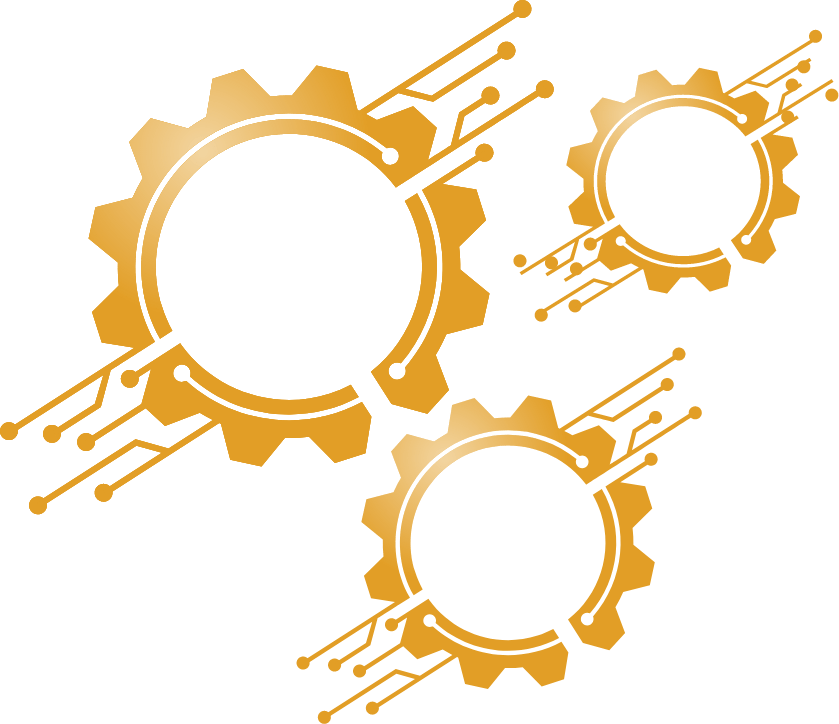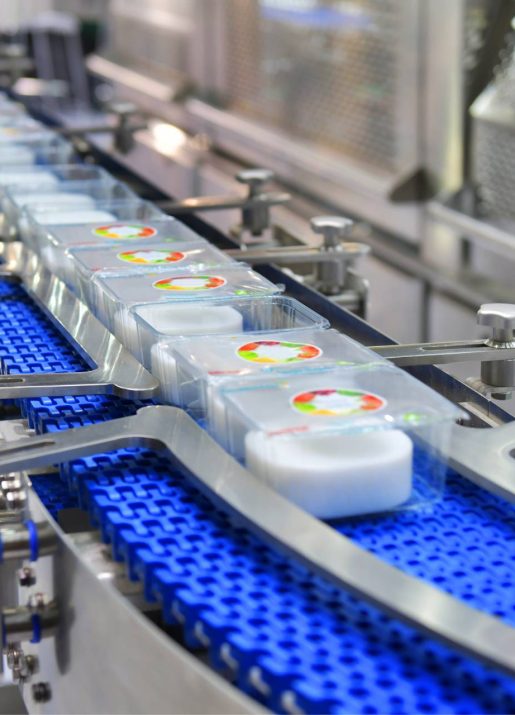Your first step to improved asset performance
If you wish to know more about our services, simply fill out the form so we can schedule a call and start your way to increased operational efficiency.
"*" indicates required fields

"*" indicates required fields



Expert guidance to optimize and innovate your factory processes through tailored automation solutions.
Industrial machinery maintenance often brings complexity and doubt. Asset managers ponder where to start, plant managers question maintenance expenditures, and technicians prioritize reliability issues.
Agile Factory Automation cuts through this uncertainty. Our asset experts, with CMRP certifications and over 20 years of industry experience, apply proven methods to meet your reliability goals.
By collaborating with key stakeholders, Agile Factory Automation identifies and implements sustainable solutions that enhance safety, and efficiency, and prolong asset life, ensuring a strong ROI.
Ready to turbocharge your reliability program? Dive in with us for a transformative journey in these areas:
Proactive maintenance approach to prevent equipment failures, ensuring optimal performance and extending machinery lifespan
Strategic management of stock and procurement processes to optimize costs, ensure availability, and streamline operations.
Efficiently coordinate tasks, labor, and resources to maximize productivity and ensure timely completion of maintenance and engineering projects.
Streamline asset management and maintenance tasks with CMMS and EAM systems, optimizing operational efficiency and asset longevity.
Empower your maintenance team with specialized training programs, enhancing skills and optimizing equipment longevity.
Empower operators to play a pivotal role in enhancing equipment reliability, optimizing performance, and ensuring prolonged asset life.
Cutting-edge techniques that elevate maintenance practices, ensuring equipment longevity, optimal performance, and reduced downtimes.
Answers to your pressing questions about implementing and redesigning processes, ensuring seamless transitions.
The journey to reliability starts with preventive maintenance (PM), the foundation of the entire maintenance strategy. Unless your PM program is effective, all subsequent maintenance strategies will have higher costs, longer timelines to implement, and a higher probability of failure.
There are three significant reasons why companies show a lack of progress when it comes to implementing an effective PM program:
In considering MRO or maintenance, repair, and overhaul inventory, there are several problems to consider that impact the efficiency of the maintenance organization. Such problems compound each other to disrupt the reliability efforts of the organization. For example, the inventory system’s poor or unskilled service level can lead to hoarding and pirating additional equipment or spare parts. Another problem is the management and location of remote storerooms. The ability to properly track the use of spares from static and remote storerooms is vital in preventing excessive inventory and, in turn, increased MRO costs.
For proper inventory control, it is necessary to have the right parts, in the right numbers, at the right time. This control is required for the inventory and purchasing departments to support maintenance. Additionally, inventory control must be considered carefully because the spare parts costs may make up 40–60% of the total maintenance budget. For this reason, controlling materials typically helps in decreasing expenses.
While it is true that controlling material costs is a quick way to increase profits, this approach is shortsighted. Blindly decreasing MRO material costs will inevitably reach a level that lowers profitability. If the MRO parts are unavailable when needed, increased equipment downtime can result, which will reduce availability. If equipment cannot meet the production schedule, late shipments and overtime to produce the product will result. These situations decrease profitability; therefore, it is understandable that a proper balance between budget and inventory must be achieved.
An organization with a well-defined work management system that is disciplined and repeatable will accurately track all maintenance and engineering information. This information is crucial in making life cycle costing decisions. A key consideration should be the responsibilities hierarchy: the who, what, when, and where. In addition, the information collected should include all costs and details, such as the equipment, location, and other associated costs. According to surveys, only about a third of all organizations utilize their work order systems to their total capacity. Many organizations will use a CMMS or an EAM system for their work management process, but this will not help those without a proper workflow. Therefore, it is vital to get the basics right first.
Consider the work order process and the path it takes to complete. First, a work order gets generated and charged to a specific piece of equipment or functional location. Once initialized, labor, parts, contractors, rental equipment, or other costs may be assigned. Once completed, all this cost information and repair history is charged to the appropriate history file — even when a preventive maintenance task is generated, it is in the form of a work order. Thus, the work order is essential in tracking maintenance and reliability. Developing and implementing work management systems is impossible without full utilization of the work order system.
One main reason organizations struggle with their work order systems is the lack of maintenance planners. This position is critical to developing and sustaining the maintenance work process, and this is only the starting point for a proper maintenance work management process.
Development of the process should encompass all of the following:
As competition increases domestically and internationally, so does the need to drive down costs. Therefore, the maintenance business function is scrutinized for increased revenue generation as one business process that presents itself with the most opportunity. However, cost reduction in maintenance does not mean a reduction in the level of service or quality; it means better control and understanding of costs associated with maintenance functions, achieved through data-driven decisions.
Computerized Maintenance Management Systems (CMMS) are designed to simplify data collection and analysis. Typically, the CMMS is independent of the primary business system (usually an ERP system) and requires manual intervention to avoid scheduling conflicts.
These systems are utilized to streamline organizations’ work management processes, such as:
When CMMS is used across multiple plants, and managers use the information to manage assets at an enterprise level, the system used is an EAM (Enterprise Asset Management). Most ERP systems contain an EAM as a module to complement the ERP system. Whether using a CMMS or an EAM system, processes must be established and adequately implemented to utilize the system to its total capacity.
Few factors hamper the technical success of organizations more than an aging workforce, a suboptimal education system, and a lack of technical apprenticeships. These problems account for the lack of understanding of basic maintenance skills among the current and emerging workforce.
By 2025, the manufacturing and maintenance industries will need to fill an estimated 3.4 million jobs. According to a Manufacturing Institute and Deloitte report, 2.7 million of those 3.4 million jobs result from technicians closing their toolbox for good. That is to say that nearly 80% of our current maintenance workforce is retiring and taking that experience with them.
Correcting this problem is not just as simple as replacing those skilled workers. Even though the recruitment process may find technically skilled workers, they still do not have the body of knowledge of the retiring workers. These figures show the growing need for a proper and well-executed training program to bring your oncoming workforce up to speed quickly.
Here are some steps to bring your oncoming workforce up to speed with a proper and well-executed training program:
Once an organization has adopted all reliability practices previously mentioned and the culture has matured to the point of continuous improvement with operational reliability at the forefront, it is time to seek engagement from operations. The main reasons for operations involvement are to increase the overall equipment effectiveness (OEE) and perform basic asset maintenance tasks, freeing up maintenance resources for action on higher skill level activities.
There are several tasks the operations can perform to contribute to the maintenance and reliability of the equipment. This includes operating the equipment effectively, adjusting the equipment properly, cleaning the equipment, lubricating the equipment, and replacing worn parts. Through careful analysis, tasks can be identified. Then, just like training maintenance personnel, operations can learn to handle some of these most basic tasks to contribute to overall equipment effectiveness.
Consider the six big losses in every manufacturing environment: breakdowns, setup/adjustment, idling or minor stoppages, reduced speed, quality defects, and startup/shutdowns. Again, there is an overlap in these losses, which pass through maintenance and operations. All of these directly impact OEE.
When considering OEE, zero breakdowns should be the goal. The zero-breakdown strategy has a five-step methodology: maintain basic conditions, maintain operating standards, restore deterioration, improve design weaknesses, and prevent human error. Studies have shown that most equipment losses can be eliminated by focusing on these five areas. For example, one study showed that over 50% of equipment failures in a plant occurred due to the neglect of the basics. In addition, simple checklists and visual inspection aids can easily be implemented to identify these basic conditions before catastrophic failures occur.
Predictive maintenance is the most advanced type of maintenance available. This may be achieved through high-end AI-driven technologies or standalone condition monitors. Many of these systems are easily integrated with CMMS and EAM packages and can save thousands in costly failure repairs. When the organization has fully matured in its maintenance journey, it is time to investigate the many available technologies.
Through proper implementation of advanced maintenance methodologies, organizations can effectively prevent failures before the critical point on the potential failure-failure curve. First, however, these methodologies must be analyzed and deemed appropriate for the equipment on which it is to be installed. Organizations should rely on the data collected through their maintenance journey and their FMEA and criticality assessments.
As a final note, organizations will fail if attempts are made to deploy advanced techniques before the organization is mature enough to understand and utilize them properly. Developing and implementing a sustainable asset management strategy is an educational experience that must change a company’s culture. The educational process during a structured implementation of basic maintenance processes must evolve into more sophisticated and advanced techniques as the organization develops the necessary understanding and skills.
who are well-equipped to understand the intricacies of your operational challenges.
With Agile Factory Automation at the helm, watch as we seamlessly integrate cutting-edge solutions that not only address immediate concerns but also fortify your processes for the future.
who are well-equipped to understand the intricacies of your operational challenges.
We’ll pinpoint inefficiencies, identify potential improvements, and draft an actionable plan tailored for you.
Over 100 reviewers think we’re awesome and rate us for taking care of them.

Agile Factory's team understood our needs perfectly, crafting an automation strategy that's both innovative and practical. Their impact is felt daily in our operations.
Eric Williams Project Manager
Their solutions have been a revelation, seamlessly integrating with our existing systems and boosting productivity. Highly recommend Agile Factory Automation.
Jan Weary Business Manager
Exceptional service! Agile Factory Automation transformed our assembly line, enhancing efficiency and significantly reducing manual intervention. A game-changer for our business.
Lance Buntz CEO/Owner